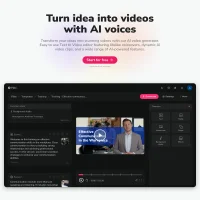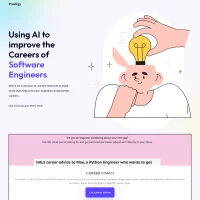Stay Ahead of the Curve
Latest AI news, expert analysis, bold opinions, and key trends — delivered to your inbox.
Anthropic CEO wants to open the black box of AI models by 2027
6 min read Anthropic CEO Dario Amodei urges AI research to focus on understanding models, not just making them smarter. As AI grows more powerful, he warns that unpredictability could become dangerous. Anthropic aims to develop tools for detecting AI issues by 2027, promoting transparency and safety in AI development. April 25, 2025 10:41
Dario Amodei, CEO of Anthropic, says it’s time we stopped just building smarter AI — and started understanding it.
In a new essay titled “The Urgency of Interpretability,” Amodei makes the case for a new frontier in AI research: cracking open the “why” behind the “wow.” Despite the skyrocketing intelligence of today’s models, Amodei warns that even their creators have little idea how these systems actually arrive at decisions. To change that, Anthropic is now targeting 2027 as the year it will reliably detect most problems inside AI models before they escalate.
Why this matters: More power, less understanding
It’s not just about making better chatbots. As models approach AGI-level intelligence — what Amodei poetically refers to as a “country of geniuses in a data center” — the risk of unpredictable behavior becomes existential. And if we don’t know how these systems think, we can’t correct or control them.
“These systems will be absolutely central to the economy, technology, and national security,” Amodei wrote. “I consider it basically unacceptable for humanity to be totally ignorant of how they work.”
Inside the interpretability push
Anthropic is betting big on mechanistic interpretability — a field focused on mapping out the internal logic of AI systems the way neuroscientists try to understand the brain.
Recent progress:
-
Researchers at Anthropic have traced specific “circuits” in AI models — like one that helps determine which U.S. cities belong to which states.
-
They estimate there are millions of such circuits inside large models — the digital equivalent of neurons — and they’ve just scratched the surface.
-
The long-term goal: tools like AI “brain scans” or MRIs that let researchers catch red flags like lying, power-seeking, or misalignment before deployment.
These ideas aren’t sci-fi — they’re strategic. If successful, they could become not just a safety framework but a competitive advantage in future AI product development.
AI’s black box problem: A shared industry blindspot
Amodei’s essay lands at a time when top-tier AI models are becoming more powerful and more unpredictable:
-
OpenAI’s new o-series models outperform others in reasoning tasks — yet hallucinate more, and the company doesn't know why.
-
Chris Olah, Anthropic co-founder, compared today’s models to plants: “more grown than built.” Their intelligence has evolved, but their inner logic remains mostly opaque.
Amodei says this lack of understanding could be dangerous, especially as models gain autonomy. He’s calling on the entire industry — including rivals like OpenAI and Google DeepMind — to increase investment in interpretability research.
A call for “light-touch” regulation and global safeguards
The essay doesn’t just challenge the AI industry — it nudges governments, too. Amodei recommends:
-
Requiring companies to disclose their safety practices and interpretability progress
-
Imposing export controls on high-end chips to China, to slow what he frames as a risky global AI race
-
Supporting “light-touch” regulation to ensure developers don’t sprint ahead without understanding what they’re building
Unlike peers who opposed California’s SB 1047 AI safety bill, Anthropic expressed modest support — further solidifying its brand as the cautious, ethics-first player in the AI race.
What this means for the AI world
This could be the start of a new AI arms race — but not the usual kind. Instead of pushing for faster, smarter models, Anthropic is pushing for transparency as the new benchmark of progress. The 2027 target isn’t just a company goal — it’s a rallying cry for an AI future that’s not just powerful, but explainable.
Because if we’re building the minds of the future, we need to know how they work.



















 AI Agents
AI Agents